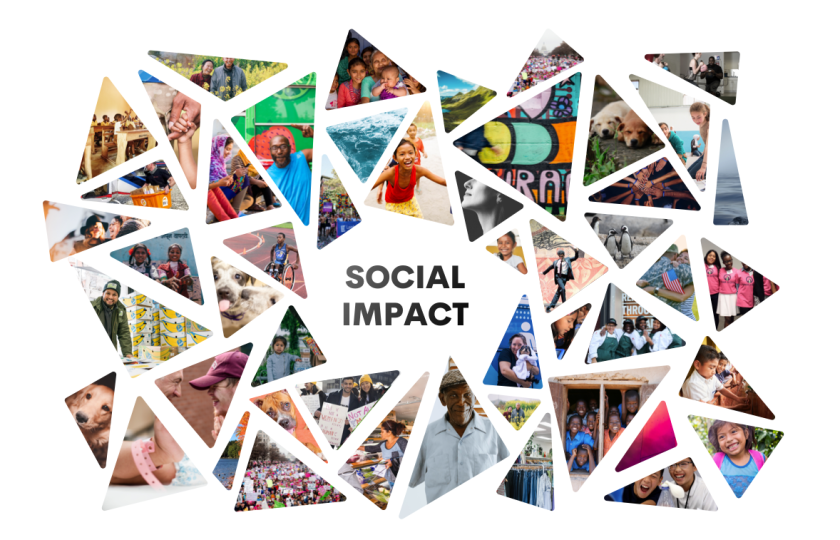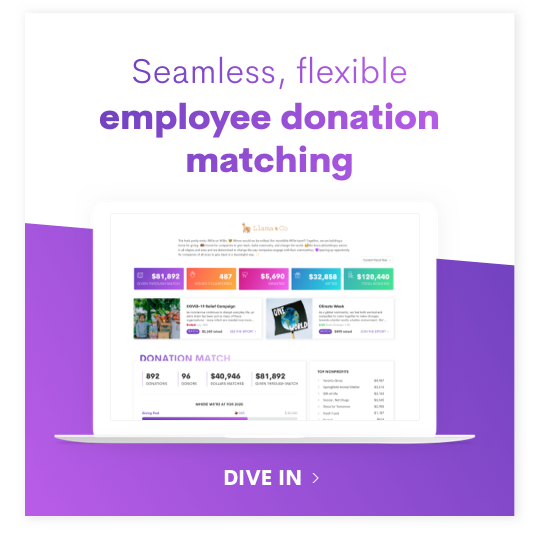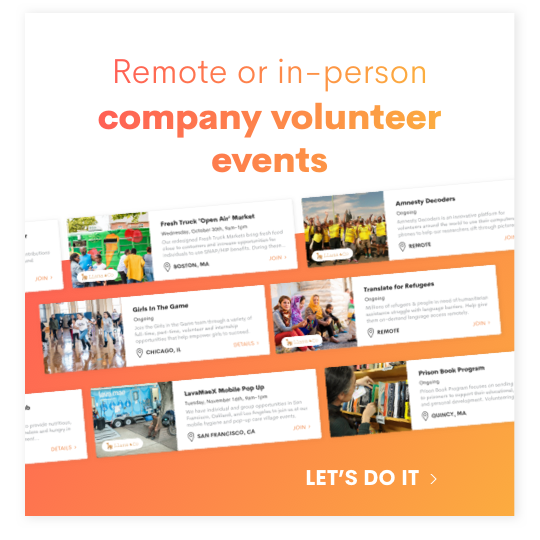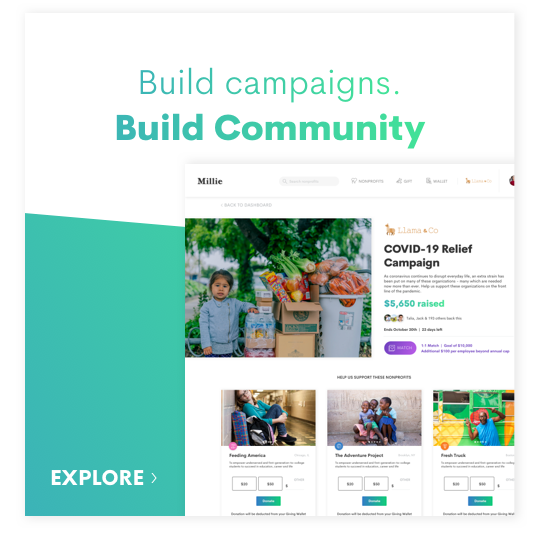Deep down, most people are happy to reach into their wallets and lend someone else a helping hand. But no one likes to feel like their donations didn’t go to a good cause, either. If you’re trying to create positive change, you’re going to want to know the end-result of your efforts. And chances are that if you feel this way, the employees who work in your organization will, too.
The solution: start a social impact program and use tools to engage and measure social impact.
When you know how to measure social impact, everything changes. You can get the donors in your company to feel like stakeholders in your latest charitable enterprise. You can measure issues like environmental impact. You can track what’s happening in local communities. Bottom line: measuring social impact does more than give you metrics for improving your organization’s ability to give. It makes everyone see the positive change they’re bringing about in the world.
There are many kinds of social impact initiatives: they can include collaborative partnerships that further the well-being of a community, they can be embedded in your social enterprise business model, they can be supply chain and sustainability focused where your company is trying to lower its carbon emissions. All in you’ll find there are so many ways your company can have a social impact, and make a positive change on society.
What is Social Impact? Defining an Intangible Idea
Let’s start with a definition. How do you take an intangible idea like social impact and assign it cold, hard metrics? How is a concept like “social good” really going to show up on the bottom line?
Social impact is the overall effect your volunteer or donor program has on the community it’s intended to change. In the context of a new charity outreach program, it’s the positive change you create for the people on the receiving end of your gifts.
It isn’t just an intangible idea. Social impact has bottom-line consequences for how we give these days. In fact, 90% of millennials will buy a cause-focused product, everything else being equal. In other words, you can create more employee engagement at your own company simply by defining the social impact you want to create. And that’s before measuring the social impact that your volunteer and donor programs have on local communities.
But while social impact can be both intangible and tangible, it’s often difficult to see unless you set some parameters. Let’s consider some of the variables you might want to measure when looking at the social impact you’ve made:
-
Financial return. Simple dollars and cents. How many donations has your organization made to a charity, or volunteer program? What kind of financial return might those donations create? For example, consider how Feeding America often tells its donors how many meals their money helped pay for. That creates the “financial return” impact metric that keeps people donating every month.
-
Social change. This is more difficult to define, but no less real. Have there been social changes from the donations or volunteer efforts you’ve made? Have you helped boost entrepreneurship in a community, but find that difficult to measure? Have you focused not just on homelessness but sustainable development? In this case, it’s a good idea to build outreach to charity organizers. They can help supply you with the information you need to create an impact report that keeps people in the loop when it comes to intangible impact.
-
Telling stories. Let’s say you open a campaign in Millie to create a volunteer program, such as cleaning up a park. It might be hard to measure how that one volunteer event impacted the climate, but what you can do is track these volunteer programs through Millie and use that information to later create case studies. Tell the stories about volunteering. You’ll create more engagement when you can show off what good-hearted volunteers are already doing.
What Are Examples of Social Impact?
- Money raised. Sometimes it helps to see the bottom line. In Millie, for example, you can create a campaign with full transparency as to how much money you’ve raised at your organization. This is especially useful if you’re running a donation program that will have social impacts that are more difficult to measure down the line.
- Dollar strength. How far your dollars go and to what. For example, on Millie, nonprofits add dollar strength to their profiles to show you tangible products or programs your money will create. This is an example from LavaMaeX:
- Stories. Did your donations help cover someone’s healthcare costs? That’s a story to tell. Did your volunteer program have a positive impact on a local ecosystem, such as a river or a stream? That’s something you can visualize. Don’t be afraid to tell the stories of your social impact so people can see the good they’re doing.
-
People Impacted. How many people were the beneficiaries of your work? We’re the programs you create sustainable? Did they help open more doors, like job creation, or stability of housing when someone was on the verge of homelessness?
Is Corporate Social Impact the Same as Social Impact?
It certainly can be. It doesn’t matter if the money or time is coming from a corporation or an individual—if it has a positive social impact, it’s a net good. Whether you want to contribute to sustainability or have an impact on climate change, it’s every corporation’s responsibility to consider its effect on the wider world.
Even if you run a large corporation, you don’t have to be a nonprofit to do good, or to contribute to social innovation. In fact, it’s the companies with the resources to divert to charity that can often have the greatest impact.
How to Measure the Social Impact of Your Campaigns
Maybe the most important thing to do is to set tangible goals. Start with the social challenge that you’re looking to have an impact on, and then ask how your new volunteer or donor program can help affect that. This accomplishes two things:
- Creates engagement right off the bat. Have you ever seen a public “thermometer” sign, where a volunteer organization is tracking its financial goals? Having that visual aid serves as a sort of immediate impact report. And not only does it track what you’re doing, but it creates a sense of community. Who doesn’t want to donate to help see the mercury in that thermometer rise?
- Setting parameters for success. There’s an old saying: what gets measured gets managed. If you want to have true impact management throughout your outreach program, you’ll have to know which parameters will help define your success. You can then use these parameters as “yardsticks” along the way.
Once you have those in place, you’ll find it much easier to run a social impact assessment of the success of your program.
Conclusion: What is Social Impact?
If you open up a campaign within Millie, you’ll notice that you can set the parameters of your new social impact efforts from the outset. Consider signing up today to see what else you can accomplish when you start measuring the impact of your charitable campaigns.



